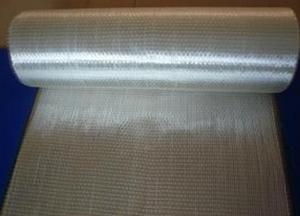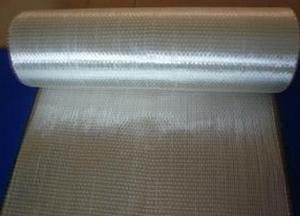E-glass Fiberglass Woven Roving 600g-1000mm
- Loading Port:
- Shanghai
- Payment Terms:
- TT or LC
- Min Order Qty:
- 5000 kg
- Supply Capability:
- 300000 kg/month
OKorder Service Pledge
OKorder Financial Service
You Might Also Like
Structure of woven roving Description
1,high strenth,corosion and resistence
2,consistent thickness,no fuzz
3,rapid impregnating
Glass woven rovings are bidirectional fabric by direct rovings in plain weave pattern. They are applicable for hand lay-up, winding and compress molding process, suitable for manufacturing tank, boat, automobile parts and other FRP products.
Main Features of the woven roving
1)Drapes well to suit the surface of intricate moulds
2)Fast wet-through and wet out
3)Easy handing and better appearance of the composite parts
4)Compatible with Unsaturated polyester resin
5)Very high laminate strength properties
Woven roving Images
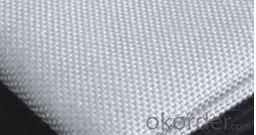
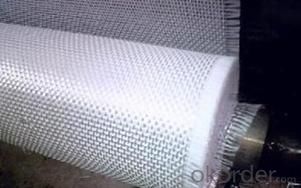
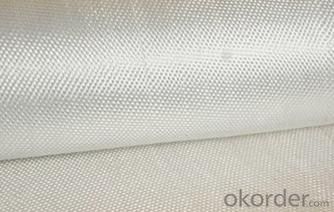
Woven roving Specification:
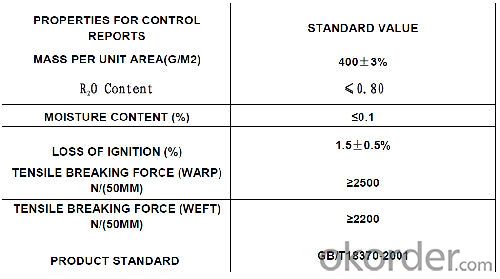
FAQ of woven roving:
Delivery Detail: 15-21days
Other spec. can be custom made as per customer's request.
- Q:What is the moisture resistance rating of fiberglass mat tissue?
- The moisture resistance rating of fiberglass mat tissue is typically high, as it is designed to withstand exposure to moisture and is commonly used in applications where moisture resistance is important, such as in the construction industry for waterproofing and insulation purposes.
- Q:How is fiberglass mat tissue used in the production of water tanks?
- Fiberglass mat tissue, which is made from glass fibers and falls under the category of non-woven fabric, is widely utilized in the manufacturing of water tanks due to its exceptional strength, durability, and resistance to corrosion. Typically, water tanks are constructed using fiberglass reinforced plastic (FRP), a composite material comprising a polymer matrix with fiberglass reinforcement. In this process, the fiberglass mat tissue plays a vital role as the material for reinforcement. To begin, the fiberglass mat tissue is cut into the desired shape and size to fit the mold of the water tank. It is then applied in layers onto the mold, with the number of layers determined by the required strength and thickness of the tank. Once in place, a resin matrix is used to impregnate and bind the fibers of the fiberglass mat tissue together. The specific resin employed, whether polyester, vinyl ester, or epoxy, depends on the particular requirements of the water tank. Typically, the resin is applied by either spraying or using a roller, ensuring complete saturation of the fiberglass mat tissue. This process is often repeated multiple times to achieve the desired thickness and strength of the tank. After the resin has cured, the fiberglass mat tissue and resin composite become rigid, forming the structure of the water tank. The resulting FRP tank is lightweight yet remarkably strong and durable, making it an excellent choice for water storage and transportation. The use of fiberglass mat tissue in water tank production offers several advantages. Firstly, it enhances the structural integrity of the tank, enabling it to withstand external forces such as pressure and impact. Secondly, fiberglass exhibits a high resistance to corrosion, ensuring that the tank remains in optimal condition even when exposed to harsh environmental conditions or corrosive substances present in the water. In conclusion, fiberglass mat tissue is an essential element in the production of water tanks, providing strength, durability, and corrosion resistance. This makes it a reliable option for various industrial, commercial, and residential applications.
- Q:How is fiberglass mat tissue used in the production of chemical reactors?
- Fiberglass mat tissue is used in the production of chemical reactors as a reinforcement material. It is typically applied to the inner surface of the reactor to provide structural strength, enhance resistance to corrosion, and improve overall durability. The fiberglass mat tissue acts as a barrier against chemical reactions, preventing leaks or damage to the reactor. Additionally, it helps maintain a stable temperature inside the reactor, ensuring efficient and safe chemical processes.
- Q:What is the chemical resistance of fiberglass mat tissue?
- Fiberglass mat tissue exhibits excellent chemical resistance due to the inherent properties of the fiberglass material. The mat tissue is typically composed of glass fibers that are woven or bound together, providing a barrier against a wide range of chemicals. The glass fibers themselves are highly resistant to corrosion, making fiberglass mat tissue suitable for use in environments where exposure to chemicals is a concern. The chemical resistance of fiberglass mat tissue can vary depending on the specific resin or binder used in the manufacturing process. Different types of resins may provide enhanced resistance to certain chemicals, while others may be more susceptible to degradation. It is important to consider the specific chemicals that will come into contact with the fiberglass mat tissue and select a resin or binder that is compatible with those substances. In general, fiberglass mat tissue is known for its resistance to acids, alkalis, solvents, and many other chemicals commonly found in industrial and commercial settings. It can withstand exposure to a wide range of corrosive substances, making it a versatile and durable material for various applications. However, it is worth noting that prolonged exposure to highly concentrated or aggressive chemicals may eventually cause some degradation or deterioration of the fiberglass mat tissue. Therefore, it is essential to consult the manufacturer's specifications and guidelines to ensure proper chemical compatibility and performance in specific environments.
- Q:What is the typical thickness of fiberglass mat tissue?
- The typical thickness of fiberglass mat tissue ranges from 0.5 to 1.5 millimeters.
- Q:How does fiberglass mat tissue compare to other types of reinforcement materials?
- Fiberglass mat tissue, widely utilized in industries such as construction, automotive, and marine, serves as a common type of reinforcement material. When evaluating fiberglass mat tissue in comparison to other reinforcement materials, several factors come into play. First and foremost, fiberglass mat tissue exhibits remarkable strength and durability. With its high tensile strength, it can endure substantial pulling or stretching forces without distorting or breaking. This strength is comparable, if not superior, to reinforcement materials like carbon fiber or aramid fibers. Furthermore, fiberglass mat tissue displays excellent resistance to chemical, moisture, and UV degradation, rendering it suitable for long-term usage in various environments. Another advantage of fiberglass mat tissue lies in its cost-effectiveness. In contrast to other reinforcement materials, fiberglass is relatively affordable, making it a popular choice for manufacturers and builders who require a cost-efficient solution without compromising quality. Its affordability expands its accessibility to a wider array of applications and industries. Moreover, fiberglass mat tissue is renowned for its versatility. It can be molded into different shapes and sizes, allowing for customization and flexibility in design. This adaptability makes fiberglass mat tissue suitable for a broad range of applications, ranging from simple repairs to complex structural reinforcements. However, it is important to note that fiberglass mat tissue may have certain limitations when compared to other reinforcement materials. For instance, it may not possess the same level of stiffness or strength as carbon fiber, which is often preferred in high-performance applications. Additionally, fiberglass mat tissue may exhibit lower resistance to impact or fatigue when compared to materials like aramid fibers. In conclusion, fiberglass mat tissue provides a favorable combination of strength, durability, cost-effectiveness, and versatility, making it a favored choice for numerous applications. While it may have some limitations when compared to other reinforcement materials, its overall performance and affordability render it a widely utilized and dependable option in various industries.
- Q:Does fiberglass mat tissue provide any thermal insulation?
- Indeed, thermal insulation is provided by fiberglass mat tissue. The reason lies in the fact that fiberglass possesses a low heat conductivity, impeding the effortless transfer of heat. As a mat tissue, it successfully captures air within its fibers, thereby generating an insulation layer. This layer serves as a shield against heat transfer via conduction and diminishes the loss of thermal energy. Consequently, fiberglass mat tissue proves to be a viable remedy for achieving thermal insulation in numerous sectors, including construction, automotive, and aerospace industries.
- Q:Can fiberglass mat tissue be used for HVAC insulation?
- Generally, fiberglass mat tissue is not utilized for HVAC insulation. The insulation used in HVAC systems typically necessitates materials that are purposely engineered to possess significant thermal resistance and inhibit the transmission of heat or cold air. Fiberglass mat tissue is frequently employed as a reinforcing material in the construction of composite materials, such as fiberglass panels or structures, rather than for insulation purposes. Insulation materials intended for HVAC systems are commonly composed of materials such as fiberglass insulation boards, foam insulation, or mineral wool, which possess superior thermal resistance properties and are specifically tailored for HVAC applications.
- Q:Is fiberglass mat tissue resistant to alkalis?
- Indeed, fiberglass mat tissue exhibits resistance against alkalis, making it a suitable option for construction and industrial purposes that involve interactions with alkaline materials like cement or concrete. Its design specifically caters to providing exceptional durability and longevity within such environments, thanks to its high resistance against alkalis. This durability stems from the chemical composition and structure of the fiberglass, which enables it to withstand the corrosive impacts of alkalis without any degradation. Hence, fiberglass mat tissue emerges as a dependable choice for projects requiring exposure to alkalis.
- Q:Is fiberglass mat tissue suitable for wastewater treatment applications?
- Fiberglass mat tissue is indeed suitable for wastewater treatment applications. This material exhibits resistance to chemicals, corrosion, and degradation, rendering it a prime option for a range of industrial uses, including wastewater treatment. Its versatility allows for its utilization as filtration media, effectively separating solid particles from wastewater. It can also serve as a lining material, preventing corrosion in tanks and pipes, as well as reinforcing concrete structures employed in wastewater treatment plants. Moreover, fiberglass mat tissue boasts exceptional mechanical strength, dimensional stability, and thermal resistance, further bolstering its suitability for wastewater treatment purposes. Overall, this material proves itself as a dependable and efficient choice for employment in wastewater treatment procedures.
1. Manufacturer Overview |
|
|---|---|
| Location | |
| Year Established | |
| Annual Output Value | |
| Main Markets | |
| Company Certifications | |
2. Manufacturer Certificates |
|
|---|---|
| a) Certification Name | |
| Range | |
| Reference | |
| Validity Period | |
3. Manufacturer Capability |
|
|---|---|
| a)Trade Capacity | |
| Nearest Port | |
| Export Percentage | |
| No.of Employees in Trade Department | |
| Language Spoken: | |
| b)Factory Information | |
| Factory Size: | |
| No. of Production Lines | |
| Contract Manufacturing | |
| Product Price Range | |
Send your message to us
E-glass Fiberglass Woven Roving 600g-1000mm
- Loading Port:
- Shanghai
- Payment Terms:
- TT or LC
- Min Order Qty:
- 5000 kg
- Supply Capability:
- 300000 kg/month
OKorder Service Pledge
OKorder Financial Service
Similar products
New products
Hot products
Related keywords
